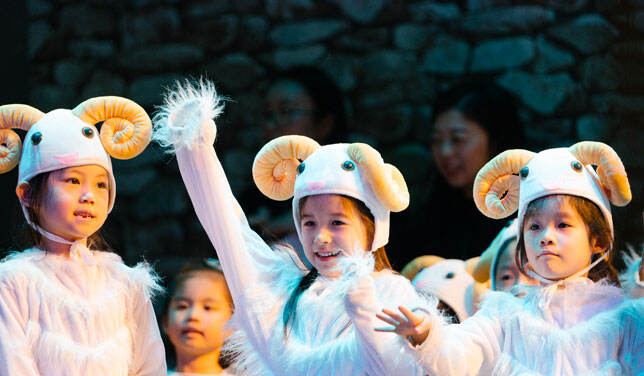Almost Some Of The Time | Transforming characters and space
23 Oct 2019
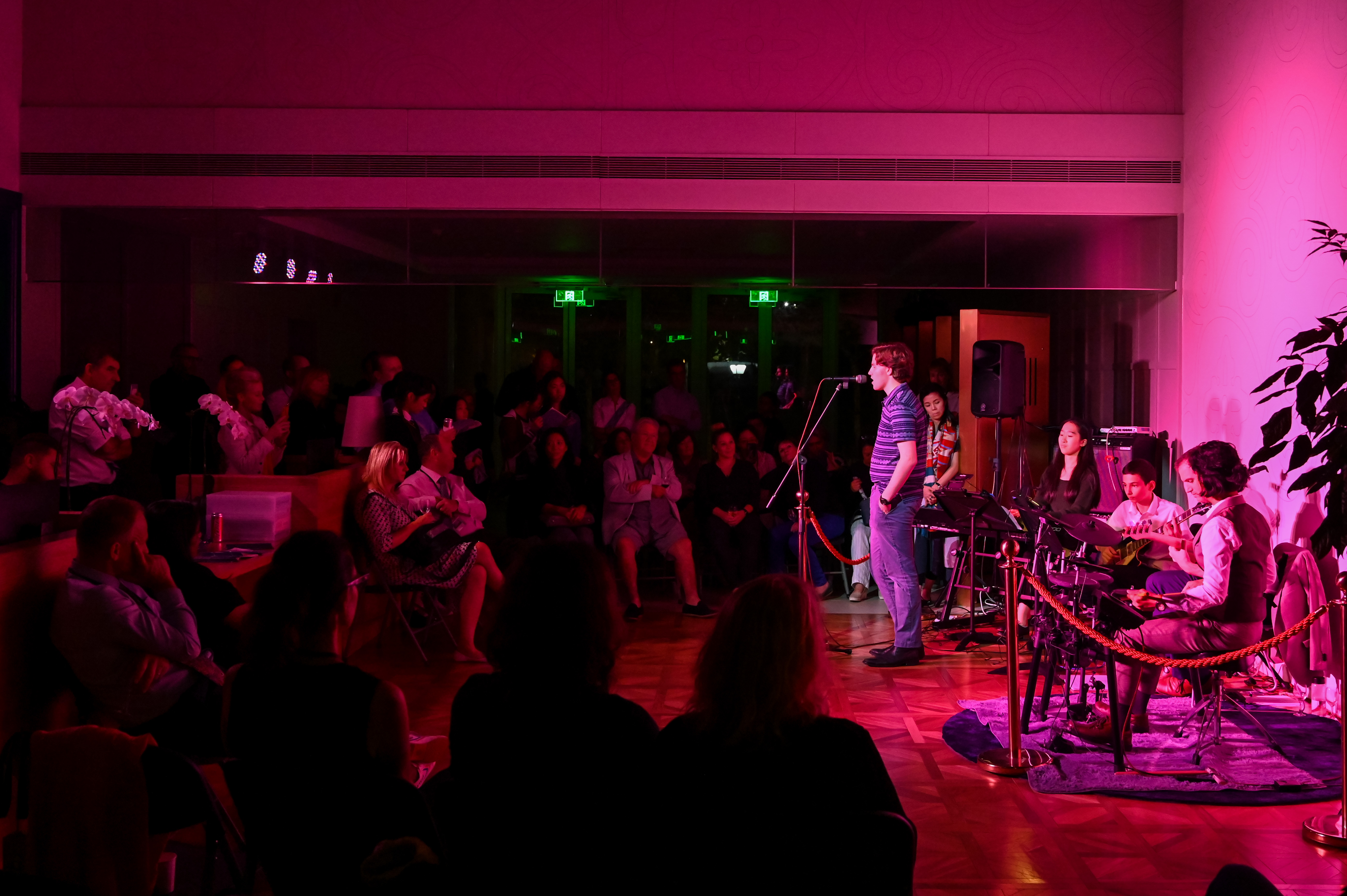 Theatre is often about finding and making effective use of spaces, of transforming them into something 'other', in the same way that acting is a way of transfiguring and reconstructing an actor into a distinct and separate character. Thus, this year's Senior School play, Almost Some Of The Time, was performed in five discrete areas of the school's main reception area. Four of the areas were occupied by a small platform, on which two people - a therapist and a person seeking therapy - talked about the problems of love and marriage, and their not going together quite 'like a horse and carriage'. The fifth space was occupied by a band.
Theatre is often about finding and making effective use of spaces, of transforming them into something 'other', in the same way that acting is a way of transfiguring and reconstructing an actor into a distinct and separate character. Thus, this year's Senior School play, Almost Some Of The Time, was performed in five discrete areas of the school's main reception area. Four of the areas were occupied by a small platform, on which two people - a therapist and a person seeking therapy - talked about the problems of love and marriage, and their not going together quite 'like a horse and carriage'. The fifth space was occupied by a band.
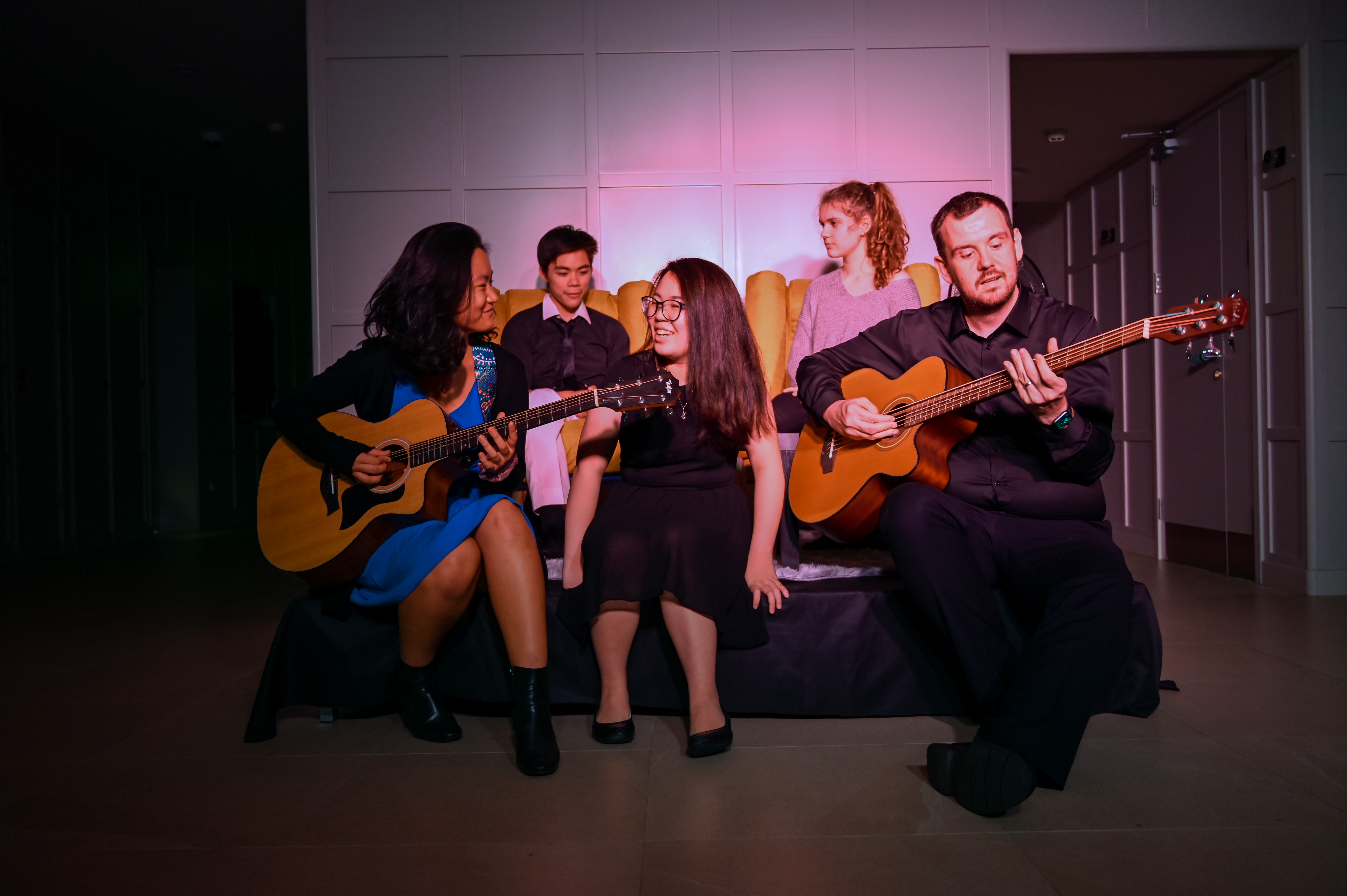
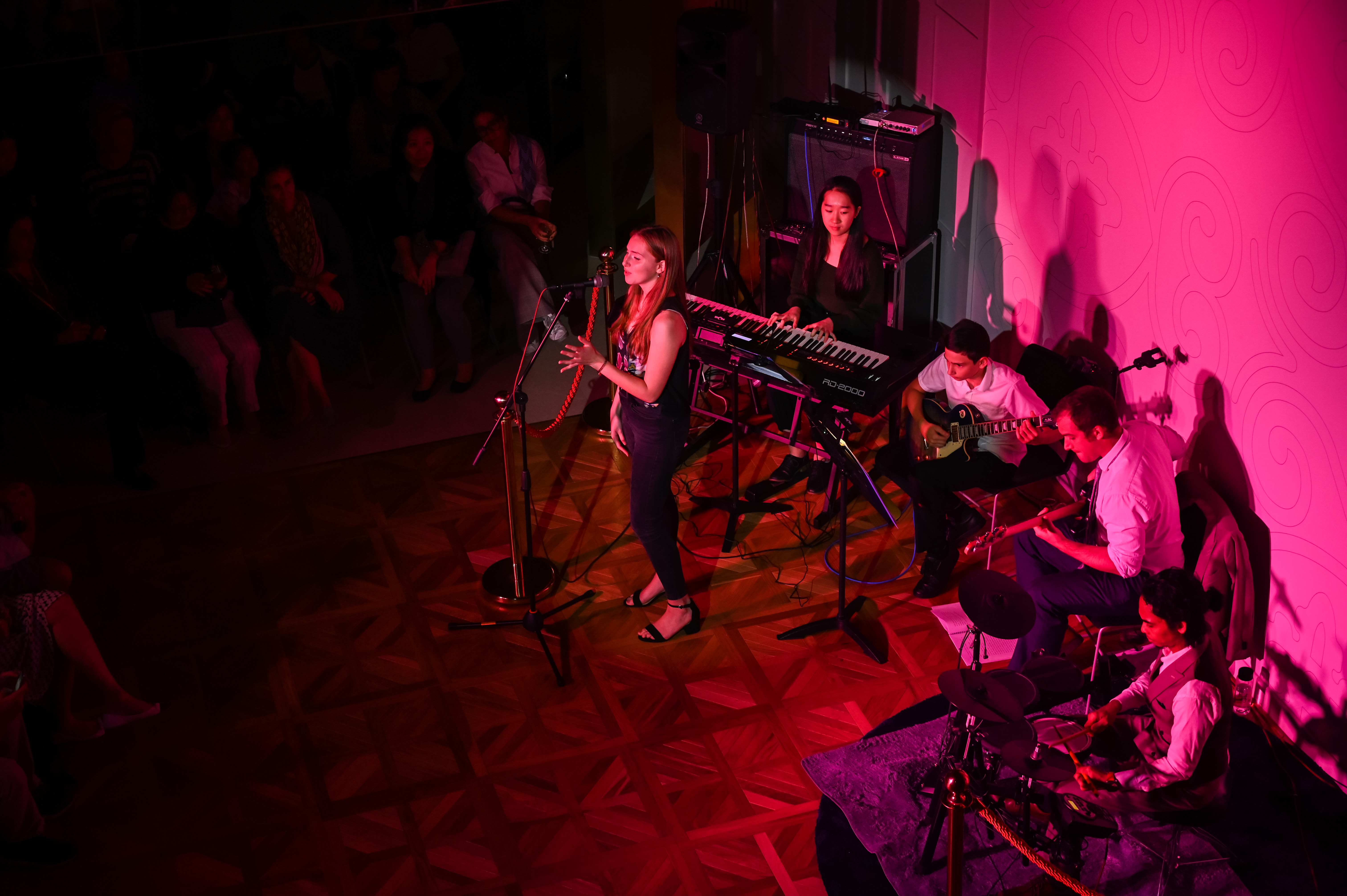
 The subject of the play was love. The focus of the ten Bob Dylan songs, which punctuated it, was also love. The audience moved around the scenes, promenade-style, so that its perception of the drama was constantly changing. The restlessness of the play therefore extended into all aspects of the production and was in fact an expression of its theme's sense of emotional alteration. As Shakespeare put it in 'A Midsummer Night's Dream', "The lunatic, the lover, and the poet,/Are of imagination all compact", and the imagination, of course, is famously changeable and fickle. Love causes agitation. It is a source of overwrought, sentimental turbulence, of inconstancy, and all of this is expressed in the play's transformed space. Everything shifted around, including the audience and even the sense of what a 'main reception area' might be.
The subject of the play was love. The focus of the ten Bob Dylan songs, which punctuated it, was also love. The audience moved around the scenes, promenade-style, so that its perception of the drama was constantly changing. The restlessness of the play therefore extended into all aspects of the production and was in fact an expression of its theme's sense of emotional alteration. As Shakespeare put it in 'A Midsummer Night's Dream', "The lunatic, the lover, and the poet,/Are of imagination all compact", and the imagination, of course, is famously changeable and fickle. Love causes agitation. It is a source of overwrought, sentimental turbulence, of inconstancy, and all of this is expressed in the play's transformed space. Everything shifted around, including the audience and even the sense of what a 'main reception area' might be.
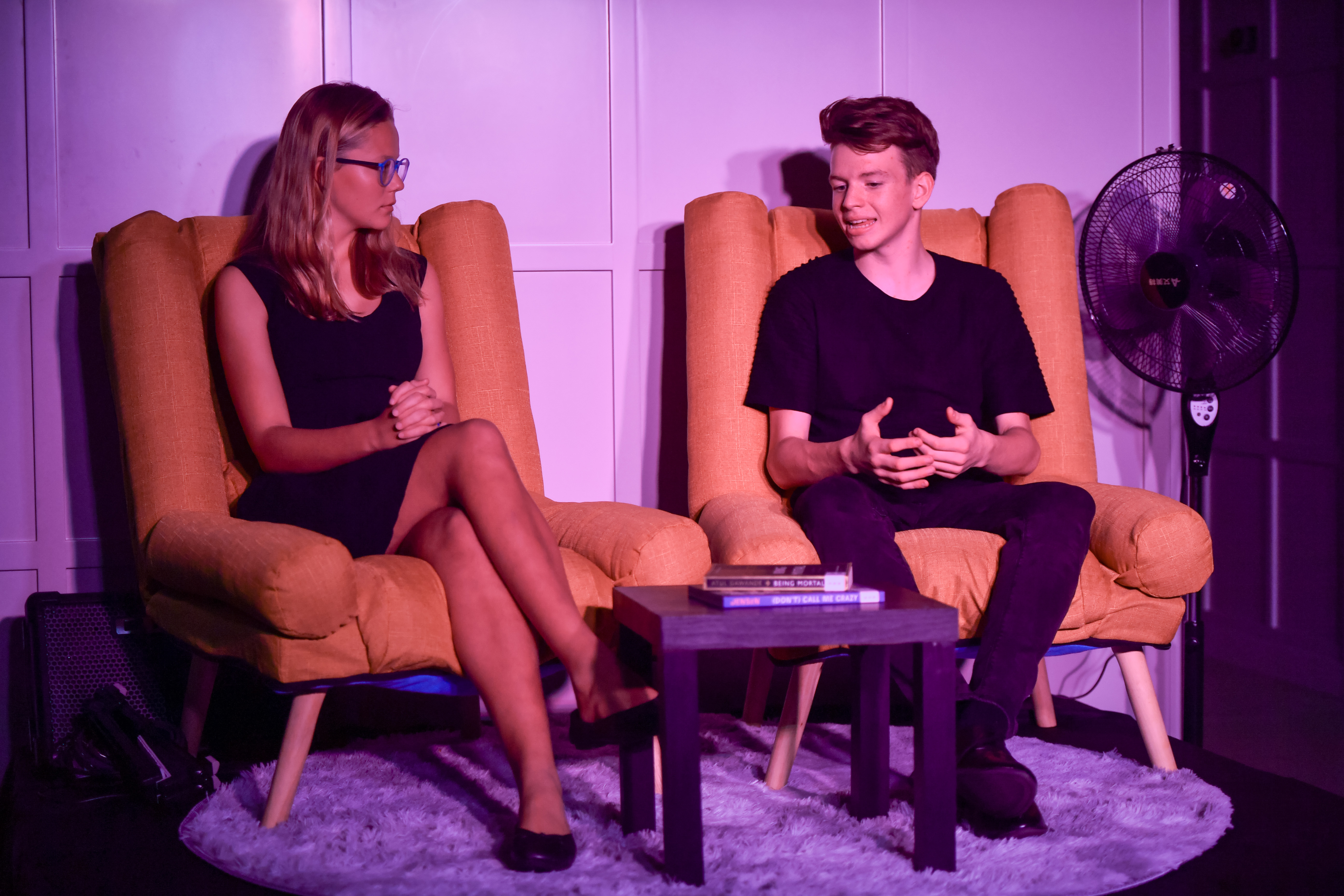

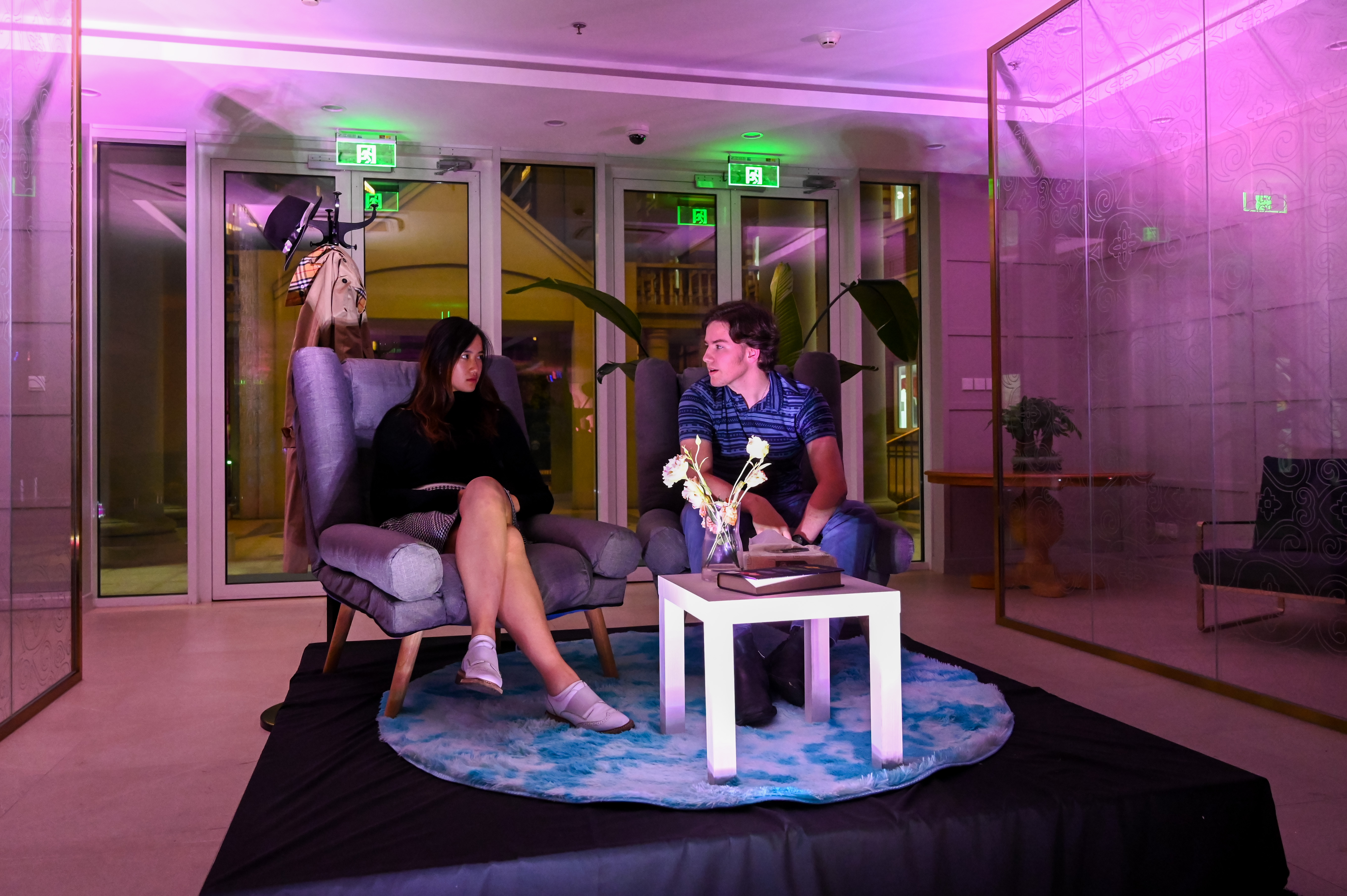
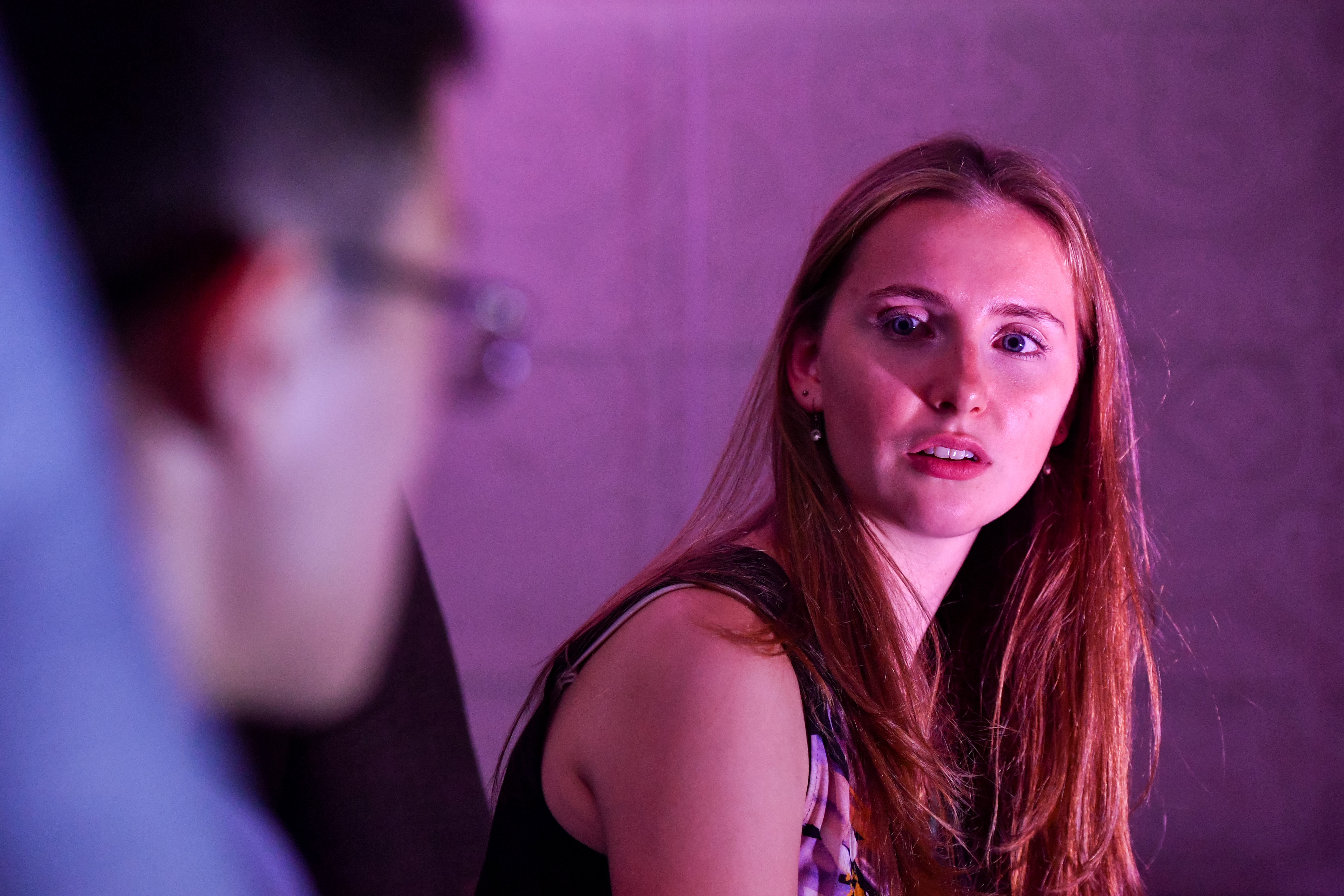
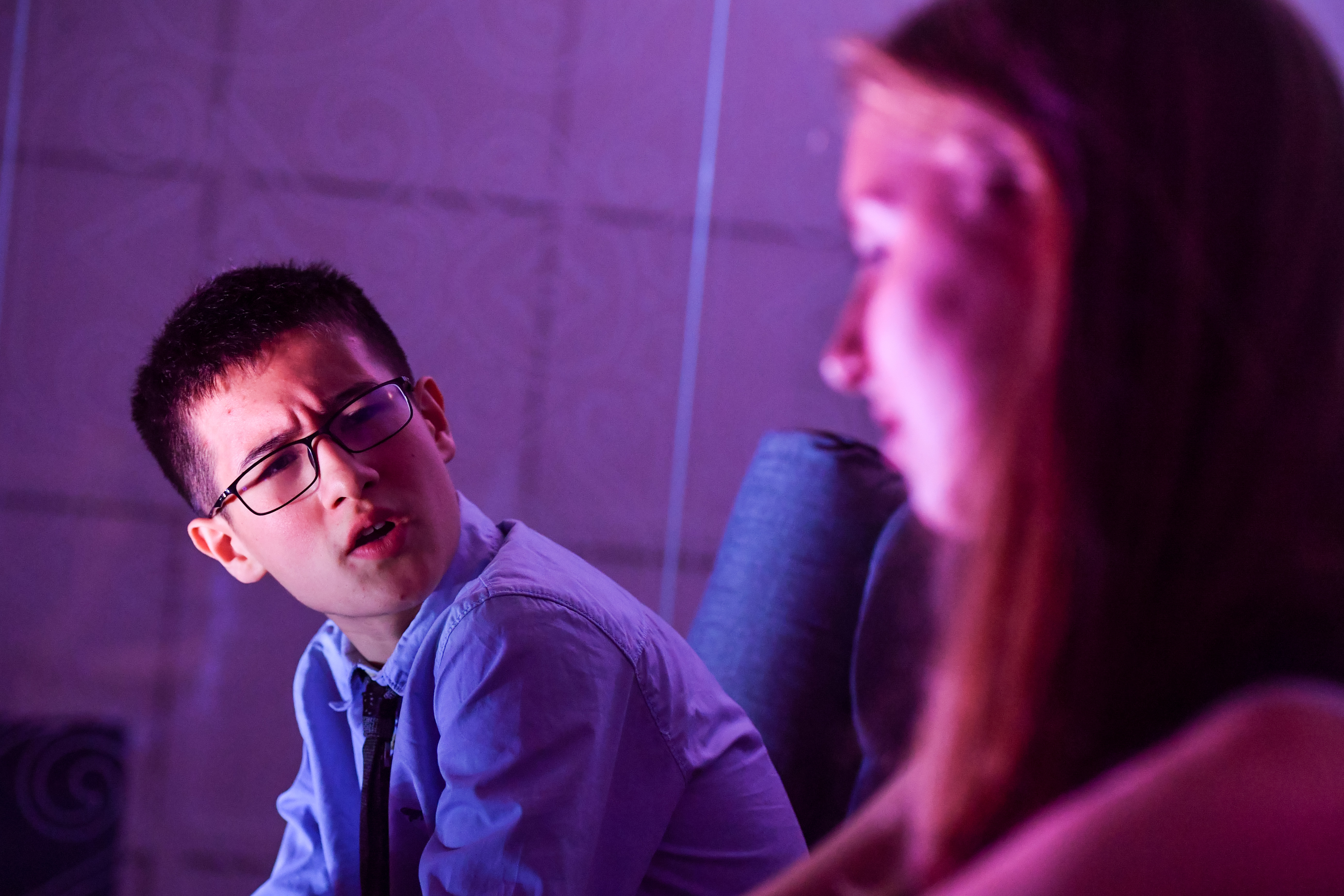 Two sets of couples occupied the therapists' chairs. They were all connected, either by marriage, friendship, or furtive liaison, though as the play progressed - backwards, through about 30 months - each of these categories was stress-tested by the unfolding consequences of the improper relationship that threatened to undermine each married couple's stability and sense of normalcy. In the end, with a concluding scene involving the four therapists discussing what motivates their 'patients' to talk to them, love and death were offered as humanity's defining preoccupations, each somehow linked to the other in a diabolically playful dance. Pain and pleasure...though which is which?
Two sets of couples occupied the therapists' chairs. They were all connected, either by marriage, friendship, or furtive liaison, though as the play progressed - backwards, through about 30 months - each of these categories was stress-tested by the unfolding consequences of the improper relationship that threatened to undermine each married couple's stability and sense of normalcy. In the end, with a concluding scene involving the four therapists discussing what motivates their 'patients' to talk to them, love and death were offered as humanity's defining preoccupations, each somehow linked to the other in a diabolically playful dance. Pain and pleasure...though which is which?
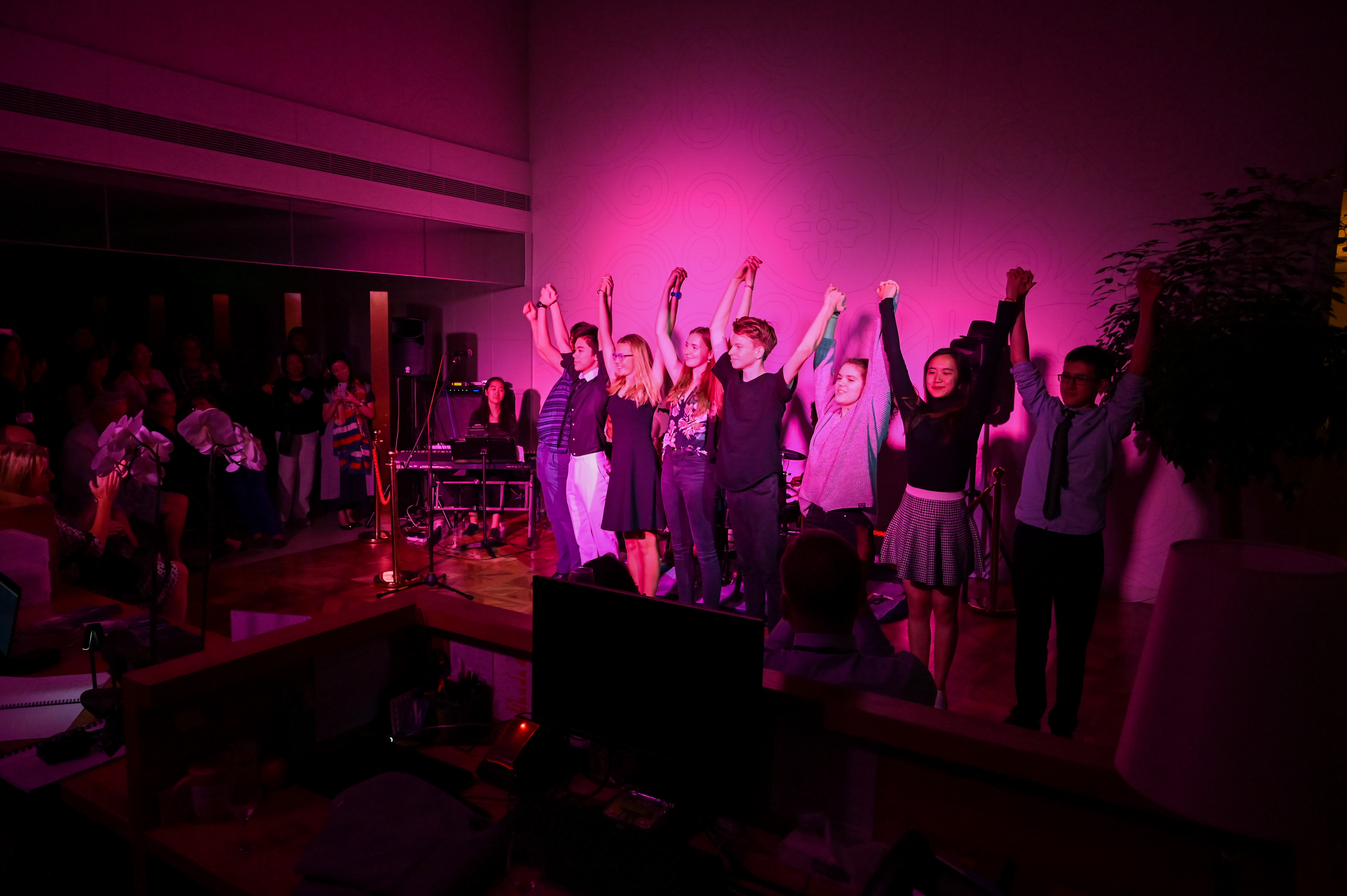 The play ended with Dylan's 'Not Dark Yet', apparently about the imminence of death, but also with a nod to the ambiguous part played by love in our lives. "It's not dark yet," Dylan sung, "but it's getting there". And it's the 'getting there', the displacements and alterations of the journey, that are at the heart of the play and its shuffling, about-face staging.
The play ended with Dylan's 'Not Dark Yet', apparently about the imminence of death, but also with a nod to the ambiguous part played by love in our lives. "It's not dark yet," Dylan sung, "but it's getting there". And it's the 'getting there', the displacements and alterations of the journey, that are at the heart of the play and its shuffling, about-face staging. Related Articles

These Wellingtonians took acting lessons from a ‘Cat’21 Jan 2025
Samuel JonesHead of Academic Drama On 15 January, 30 Wellington Drama and Music Fellows were afforded a truly remarkable opportunity. They had the chance to work closely with a cast member of the acc
Read More

Swimmer Shannon earns a spot at the Southeast Asian Games!28 Apr 2025
At the Shanghai Swimming League Championship, Shannon showed what pushing through fatigue and coming back even stronger really looks like! She smashed 2 new SCM (Short Course Meters) Personal Bests i
Read More

Wellington Entrepreneurs Top Diamond Challenge 2 Years in a Row06 Mar 2025
For the second consecutive year, Wellington pupils have clinched top honours at the prestigious Diamond Challenge, an internationally recognised entrepreneurship competition for high school students.
Read More








